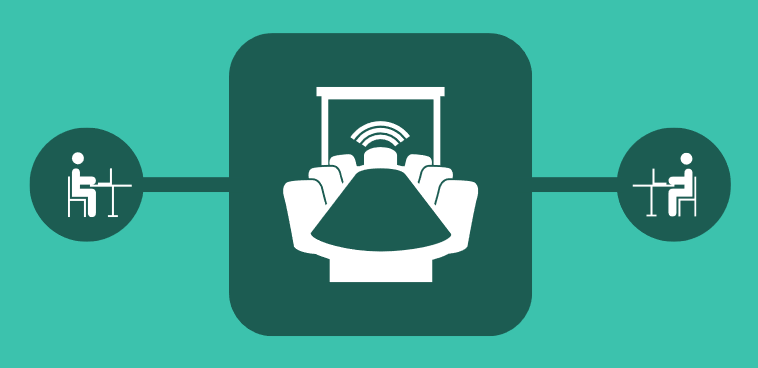With organizations eyeing a return to the office soon, most leaders are breathing a sigh of relief. But not everyone will be returning at the same time, if at all, and many of their teams will be made up of new people who weren’t part of the “before time.”
How can leaders of hybrid and remote teams incorporate new team members quickly and jump-start integration so that innovation, collaboration and communication are even better than before the pandemic?
Some of these challenges existed before the pandemic. Managers of hybrid teams often reported the forming of cliques, or teams-within-teams. The people in the office were jealous of the slackers at home who didn’t have to fight traffic or wear grownup clothes. They tended to have conversations with each other more than with their remote teammates. The people at home thought the suck-ups at the office got first pick of the assignments and got more of the boss’s attention.
All this can have a negative impact on collaboration and the way the team functions when solving problems.
Moving forward, how can leaders help their teams collaborate and work together as effectively as possible?
Here are four things that may help:
1. Set expectations for teamwork and collaboration
Many of the problems with hybrid teams are the result of unconscious bias. The problem isn’t that one group of teammates distrusts or doesn’t like the other, it’s that they aren’t mindful of the dynamics at work.
When people are out of sight, they are literally out of mind. When a team member has a question, who do they go to? Odds are the people in the office are turning to those in the same room before their remote teammates.
The way you choose to meet often gives a significant, unintended benefit to the “home team.” Do everything possible to ensure equal input from co-located and remote team members.
This is particularly true when bringing new members onto the team. It’s important that teams have clear expectations around the idea that they are expected to work together and how to do that. Find opportunities for team members to interact by forming sub-teams and suggesting remote coworkers as resources.
2. Stop managing by line of sight
One of the biggest complaints about blended teams is that the folks in the office have more access to the manager than those working remotely. Furthermore, the manager often chooses people for assignments based on their proximity. Sometimes it’s literally because they are looking across the room and see someone who is available.
When delegating, offering development opportunities or handing out feedback, take a breath and make sure the people you don’t see every day are getting a fair shot at these opportunities.
When making announcements, try to share important news with the whole team equally. The habit of announcing things face-to-face, then telling those in the field, can lead to a feeling that the remote workers are second class citizens. Often the rumor mill runs ahead of the facts, so communicating at the same time with everyone will pay dividends in the short- and long-term.
3. Not everything needs to be a meeting
Meetings are a real sore spot for hybrid teams. When you have some people in the office and others dialing in electronically, there are inherent imbalances in power and contribution. Try using asynchronous tools like discussion boards, short discussions in Slack or Teams, or survey tools to get people onboard and contributing ideas before gathering.
It will take some coaching to get people to take these seriously, but you can then have shorter, focused meetings as necessary to reach conclusions or hammer out solutions.
Consider having fewer hybrid meetings and more live online sessions, with everyone on and contributing equally when equal input and inclusion are critical. When everyone’s on webcam and able to speak or chat, it’s harder to forget about those not in the office and to get more — and higher-quality — input from them.
4. Choose technology that allows visibility to the whole team and the work
People working in the office have an advantage in that they can not only ask questions and get information faster, but they also overhear conversations and get news instantaneously. Is Bob struggling with that project? Is there a rumor the customer may demand changes?
One of the challenges for leaders in this blended environment is ensuring everyone has equal access to information. Dashboards, written (and easily posted) status updates and other asynchronous tools make it easy for those not in the shared workspace to still know what’s happening. Of course, it needs to be clear that it’s everyone’s responsibility to stay apprised of what’s happening.
There’s no doubt that people will have different energies when some people are gathered in a physical, social unit while others are remote. It takes work to ensure everyone stays involved and engaged. It needs to be both easy and comfortable for people to reach out to each other, include all team members in discussions and develop the relationships that make work happen, regardless of if they’re at the next desk or in the next time zone.
This will be one of the primary challenges for organizations, leaders and individual teammates as we navigate the next incarnation of the blended and hybrid workplace.
Wayne Turmel is the co-founder of the Remote Leadership Institute. Turmel is the author or coauthor of seven nonfiction books, including “The Long-Distance Leader” and “Meet Like You Mean It.” His most recent book, released in January 2021, is “The Long-Distance Teammate: Stay Engaged and Connected While Working Anywhere,” co-written with Kevin Eikenberry.
If you enjoyed this article, sign up for SmartBrief’s free e-mail on leadership and HR, among SmartBrief’s more than 200 industry-focused newsletters.
